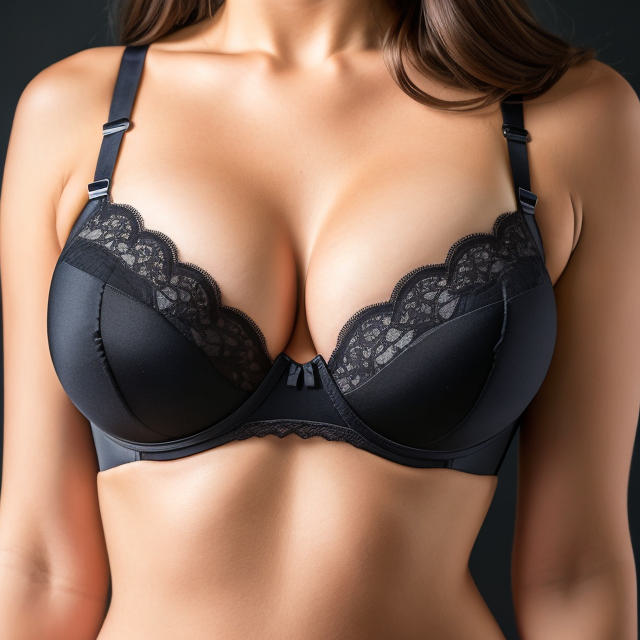Reveal Your Inner Radiance: The Benefits of Skin Rejuvenation
Posted on: March 21, 2024
Defining Skin Rejuvenation
Process Overview
Skin rejuvenation is a broad term that encompasses various treatments aimed at enhancing the skin’s appearance. It seeks to minimize imperfections, such as wrinkles, fine lines, and uneven skin tone.
This process caters to individuals desiring a more youthful or radiant complexion. By addressing these concerns, skin rejuvenation significantly boosts self-confidence and overall well-being.
Goals Achieved
The primary objectives of skin rejuvenation include reducing signs of aging, treating specific skin conditions like acne scars or pigmentation, and improving the skin’s texture and tone. Each goal focuses on restoring the skin’s natural beauty and delaying the effects of aging.
By achieving these goals, individuals notice a marked improvement in their skin’s appearance. This leads to enhanced satisfaction with one’s look and often, a more positive outlook on life.
Methods Explored
Skin rejuvenation methods fall into two main categories: non-invasive and minimally invasive. Non-invasive techniques involve no needles or incisions, making them popular for those wary of surgical procedures. Examples include chemical peels and laser therapy.
Minimally invasive methods might involve slight discomfort but offer longer-lasting results. These include microneedling and injectable treatments like Botox or dermal fillers.
Both approaches aim to deliver noticeable improvements in skin quality without the need for extensive downtime or recovery periods.
Overview of Resurfacing Techniques
Laser Therapy
Laser therapy uses focused light to remove damaged skin layer by layer. It’s highly precise, making it ideal for targeting specific areas without harming surrounding tissue. This technique stimulates collagen production, leading to smoother, firmer skin.
Patients often choose laser therapy for its effectiveness in treating wrinkles, sun damage, and acne scars. However, it requires a skilled practitioner and has a longer recovery time compared to other methods.
Dermabrasion
Dermabrasion involves mechanically sanding the skin to remove the outer layers. It’s effective for treating deeper imperfections like scars and deep wrinkles.
This method can significantly improve the skin’s appearance but may not be suitable for very dark or very light skin due to the risk of pigmentation changes. Recovery from dermabrasion can take several weeks during which the skin heals and regenerates.
Chemical Peels
Chemical peels use a chemical solution to remove the top layers of skin, allowing new, healthier skin to emerge. They range from mild to deep peels, depending on the solution’s strength.
Suitable for various skin issues including fine lines, acne scars, and uneven tone, chemical peels offer customizable treatments based on individual needs. They generally have shorter recovery times but may require multiple sessions for best results.
Popular Treatments for Skin Enhancement
Laser Resurfacing
Laser resurfacing stands out among skin rejuvenation techniques. It uses a precise instrument to remove the top layer of skin, encouraging new skin cells to grow. This method effectively addresses various skin concerns, including wrinkles and scars.
Patients often see significant improvements within weeks. However, they should consult with cosmetic surgeons to understand the procedure’s specifics.
Chemical Peels
Chemical peels involve applying a chemical solution to the skin, causing it to exfoliate and eventually peel off. This reveals a smoother, more youthful layer beneath.
It’s suitable for those looking to enhance their skin’s appearance around the eyes and other facial areas. Like laser resurfacing, its effectiveness varies by individual.
Microneedling
Microneedling works by creating tiny punctures in the top layer of skin using fine needles. This process stimulates the body’s natural healing response, promoting collagen production.
The result is firmer, clearer skin. Microneedling is less invasive than some other treatments and can be performed on all parts of the body.
Emerging Trends
Recent years have seen a rise in personalized skincare routines and at-home devices aimed at enhancing skin health. These trends offer more accessible options for maintaining skin rejuvenation efforts outside clinical settings.
They cater to individuals’ unique needs, making skincare more customized than ever before.
Deep Dive into Laser Resurfacing
Laser Basics
Laser resurfacing removes the outer layers of skin. This process targets the surface to treat fine lines and improve the skin’s overall look. The technique uses focused light to remove damaged skin, promoting new, healthy skin growth.
Ablative Lasers
Ablative lasers work by vaporizing the top layers of the skin. They are effective for more significant skin issues like deep wrinkles. Recovery time from ablative laser therapy is longer, often requiring weeks for full healing.
Non-Ablative Lasers
Non-ablative lasers, in contrast, heat up the underlying skin tissue without harming the surface. This method has a shorter recovery period, making it a popular choice for those with less severe skin concerns or limited downtime availability.
Ideal Candidates
Not everyone is a suitable candidate for laser resurfacing. Ideal candidates have realistic expectations and specific concerns such as fine lines or uneven texture. Those with active acne or very dark skin may need to explore other options due to potential complications.
Expected Outcomes
Post-treatment, patients can expect smoother, younger-looking skin. However, results vary based on the individual’s condition and the type of laser used. Following aftercare instructions carefully can enhance outcomes and reduce recovery time.
Chemical Peels and Their Benefits
Peel Process
Chemical peels involve applying an acid solution to the skin. This solution removes the outer layers of dead skin cells, revealing healthier, more vibrant skin beneath. The process stimulates new cell growth and collagen production, leading to a smoother and more youthful appearance.
Peel Levels
Light Peels
Light peels use mild acids like ascorbic acid. They target the very top layer of skin. Recovery is quick, often within a few days. Patients can expect a subtle improvement in skin texture and tone.
Medium Peels
These peels go deeper, targeting damaged skin cells with stronger acids. Recovery may take up to a week. The benefits include a noticeable reduction in fine lines and wrinkles, as well as improved skin tone.
Deep Peels
Deep chemical peels offer the most dramatic results. They require the longest recovery time, sometimes several weeks. However, they significantly improve deep wrinkles and can dramatically enhance skin texture and tone.
Microneedling Explained
Procedure Basics
Microneedling involves tiny needles that puncture the skin. This process creates minor injuries, prompting the body to heal.
During healing, collagen production increases. Collagen is key for firm, youthful skin. Thus, microneedling can reduce signs of aging.
Skin Benefits
Microneedling is versatile. It addresses various skin concerns effectively.
It can lessen scars and wrinkles. Large pores also become less noticeable after treatments. This versatility makes it a preferred option for many seeking skin rejuvenation.
Safety Profile
Compared to invasive procedures, microneedling has minimal downtime. Most people return to their routine quickly.
Its safety profile is excellent, making it suitable for various skin types. However, consulting with a professional is always advised to ensure it’s right for you.
In contrast to chemical peels discussed earlier, microneedling offers a different approach to skin care. While both promote healthier-looking skin, microneedling relies on physical rather than chemical means to initiate the body’s natural healing processes.

Understanding Dermal Fillers
Dermal Basics
Dermal fillers, key players in skin rejuvenation, tackle aging signs directly. They restore lost volume and smooth out wrinkles by injecting substances into the skin. This process targets the dermis, enhancing facial contours and reducing lines.
Fillers are not permanent. Their effects fade, requiring regular maintenance for lasting results.
Filler Types
Several fillers cater to specific needs. Hyaluronic acid is popular for its natural presence in the skin. It hydrates and adds volume, ideal for lips and cheeks.
Calcium hydroxylapatite, another type, corrects deeper lines and enhances bone structure. Its effects are longer-lasting but still temporary.
Poly-L-lactic acid focuses on stimulating collagen production over time. It’s perfect for deeper facial wrinkles.
Each filler has a targeted approach, addressing different areas of concern.
Maintenance Importance
The temporary nature of fillers means upkeep is crucial. Regular sessions ensure continued effects, keeping the skin youthful and vibrant.
Choosing the right filler depends on individual goals and problem areas. A professional consultation can guide this decision, tailoring treatment to each person’s needs.
Risks and Choosing Healthcare Providers
Common Risks
Skin rejuvenation treatments, while beneficial, come with their share of risks. Patients may experience infection, scarring, or unsatisfactory results. Each of these outcomes can lead to further concerns and the need for additional treatments. It’s crucial that patients understand these potential issues before proceeding.
Infections can complicate the healing process, requiring medical intervention. Scarring might necessitate corrective procedures, adding to the patient’s financial burden and recovery time. Unsatisfactory results could stem from a variety of factors including the practitioner’s skill level and the patient’s skin condition.
Qualified Providers
Choosing a qualified healthcare provider is paramount for safe and effective treatment. Patients should look for providers with extensive experience in skin rejuvenation. Researching a provider’s credentials is a vital step in this process.
Reading reviews from previous patients can offer insights into their experiences and outcomes. Scheduling consultations allows individuals to discuss their expectations and any concerns they might have directly with the provider.
Patient Expectations
Setting realistic expectations is essential for patient satisfaction. A thorough consultation provides an opportunity to understand the procedure, its potential results, and limitations. It also allows healthcare providers to tailor treatments according to individual conditions and desired outcomes.
Summary
Exploring skin rejuvenation means unlocking a world where your skin’s youthfulness and vitality are restored. You’ve seen the spectrum, from resurfacing techniques like laser treatments and chemical peels to microneedling and dermal fillers. Each method offers its unique benefits, targeting specific concerns to enhance your skin’s appearance. Remember, the key to a successful rejuvenation journey lies in understanding these options and choosing what best fits your needs. It’s about finding that balance between desired outcomes and potential risks, always prioritizing safety by selecting reputable healthcare providers.
Now, armed with knowledge, you’re better prepared to make informed decisions about your skin care. Whether it’s smoothing out wrinkles, correcting blemishes, or achieving that sought-after glow, the path to rejuvenation is clearer. Don’t hesitate to consult with a professional to tailor a treatment plan that aligns with your goals. Your skin’s renewal starts today—embrace the possibilities and take the next step towards a more radiant you.
Frequently Asked Questions
What is skin rejuvenation?
Skin rejuvenation refers to various treatments aimed at restoring the youthful appearance of your skin, improving texture, tone, and overall complexion.
Can laser resurfacing really improve my skin?
Yes, laser resurfacing can significantly improve your skin by reducing wrinkles, scars, and pigmentation, promoting a smoother and more even skin tone.
What are the benefits of chemical peels?
Chemical peels can rejuvenate your skin by removing dead skin cells, reducing fine lines, sun damage, and mild scars, leading to brighter and smoother skin.
How does microneedling enhance the skin?
Microneedling enhances the skin by stimulating collagen production, which helps in reducing scars, wrinkles, and improving the overall texture of the skin.
Are dermal fillers safe for skin enhancement?
When administered by a qualified healthcare provider, dermal fillers are safe for enhancing facial volume and smoothing out wrinkles for a more youthful appearance.
What should I consider when choosing a healthcare provider for skin treatments?
Choose a provider with certified expertise in dermatology or cosmetic surgery, positive reviews from previous patients, and who clearly explains the risks and benefits of each treatment.





